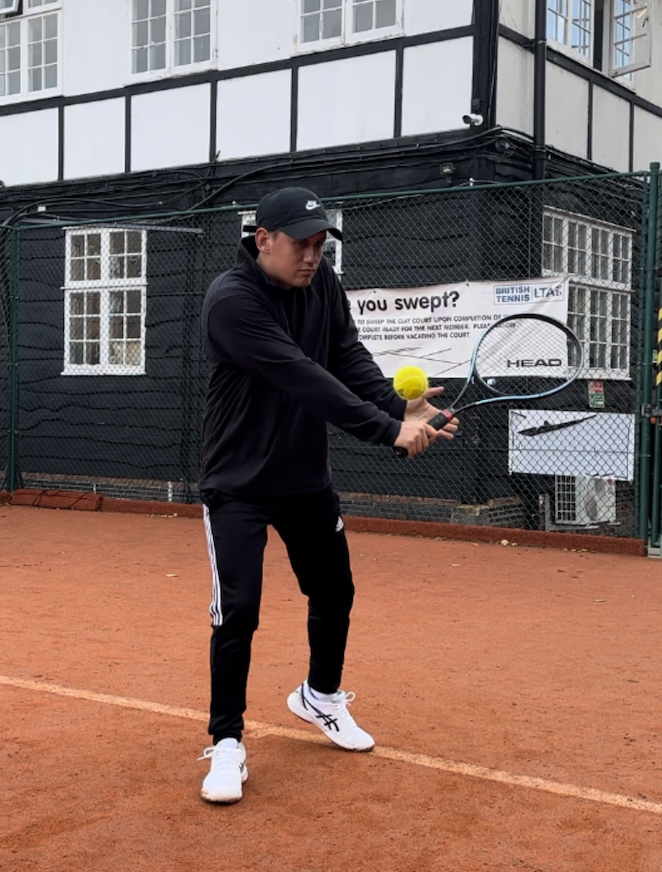The drop shot has emerged as a strategic gem in modern tennis, gaining popularity for its versatility and effectiveness on the court. This shot involves delicately tapping the ball over the net, aiming to land it close to the net on the opponent’s side. Its growing prominence can be attributed to its ability to disrupt the rhythm of power players, offering a change of pace and requiring opponents to cover more court quickly.
In today’s game, where baseline rallies and powerful groundstrokes dominate, the drop shot serves as a tactical surprise that catches opponents off guard. Additionally, with players becoming more physically resilient, the drop shot provides an element of finesse that complements the raw power seen in contemporary tennis. Its rising popularity underscores the importance of an all-encompassing game strategy, blending aggression with subtlety to outmanoeuvre opponents and add an extra layer of unpredictability to a player’s arsenal.
To achieve the ideal drop shot, there are three primary elements that require your attention and focus. These are:
1. Hitting the ball as short as possible
The initial key to executing a successful drop shot is minimising the ball’s length. Often, players overly prioritise incorporating backspin, inadvertently causing the ball to achieve excessive depth and height. This unintended outcome can provide opponents with an opportunity to counterattack effectively. Therefore, the primary emphasis should be on precisely dropping the ball as short as possible. By mastering this aspect consistently, players can then progress to the subsequent steps in refining their drop shot technique.
To cultivate the necessary touch for executing a precise drop shot and attaining the ability to place it as close to the net as possible, it’s crucial to maintain proximity between the racket and elbow and your body. The closer these elements are kept to your body, the greater control you’ll exert over the ball. This contrasts with the conventional topspin forehand, where generating power requires keeping everything at a distance from your body, facilitating optimal racket head speed and a liberated swing. Recognising this inverse relationship emphasises the distinct mechanics involved in executing a delicate drop shot compared to a power-driven topspin forehand.

Leveraging angles while employing the drop shot becomes a strategic advantage, aiding in keeping the ball short and intensifying the challenge for the opponent. By skillfully directing the ball to exploit acute angles, players can further limit the opponent’s response time and court coverage. This not only adds an element of unpredictability but also amplifies the effectiveness of the drop shot, making it a more potent weapon in disrupting the opponent’s game plan. The calculated use of angles enhances the overall deception and difficulty for opponents attempting to counter the well-executed drop shot.
2. Applying back spin
The next component in mastering the flawless drop shot involves inducing the ball to “die” upon impact. To achieve this, it is essential to impart backspin on the ball, rendering it more challenging for the opponent to reach before its second bounce. This intentional application of backspin not only adds a layer of difficulty for opponents but also contributes to the ball’s abrupt and unpredictable stop upon landing, making it a formidable weapon in creating advantageous court positioning.
To produce the essential backspin, it’s crucial to open the racket face deliberately, manipulating the ball’s trajectory. Given the advanced nature of this technique, it’s advisable to experiment with the racket face angle, avoiding excessive openness initially. This cautious approach becomes particularly vital if you observe the ball elevating too high, providing the opposition with an opportunity to counterattack. Moreover, the amount of acceleration plays a pivotal role.
While a faster racket movement generates more backspin, it also entails a trade-off with control. Commence with a measured pace, concentrating on achieving a short landing while refining the right spin. As proficiency improves, gradual adjustments in racket face angle and acceleration can be incorporated to strike a balance between backspin and control.
3. Adding disguise

Image courtesy of Creator: Fernando da Veiga Pessoa https://www.flickr.com/photos/daveiga/2724069562/
The ultimate element in executing the flawless drop shot is incorporating disguise, a technique frequently observed among professionals. They adeptly set up for what appears to be a routine forehand or backhand, only to execute a drop shot at the last moment. This element of surprise significantly heightens the difficulty for opponents, as they are left guessing the intended shot until the final second. The strategic use of disguise not only adds a layer of unpredictability to a player’s repertoire but also enhances the overall effectiveness of the drop shot, making it a formidable and challenging play for opponents to anticipate and counter.
Executing this on the forehand can be somewhat more challenging, primarily due to the necessary grip adjustment. For individuals with a one-handed backhand, grip alteration is unavoidable, while those with a two-handed backhand likely already employ a continental grip, which is also ideal for drop shots. The setup mirrors a standard groundstroke preparation. Then, if the situation demands it, incorporate a last-second grip change using the non-dominant hand before executing the drop shot. This approach ensures that players, irrespective of their backhand technique, can seamlessly integrate disguise into their forehand drop shot, considering the earlier emphasised points of keeping the ball short and inducing backspin.
[Check out our recent post on how to hit a one handed backhand]
